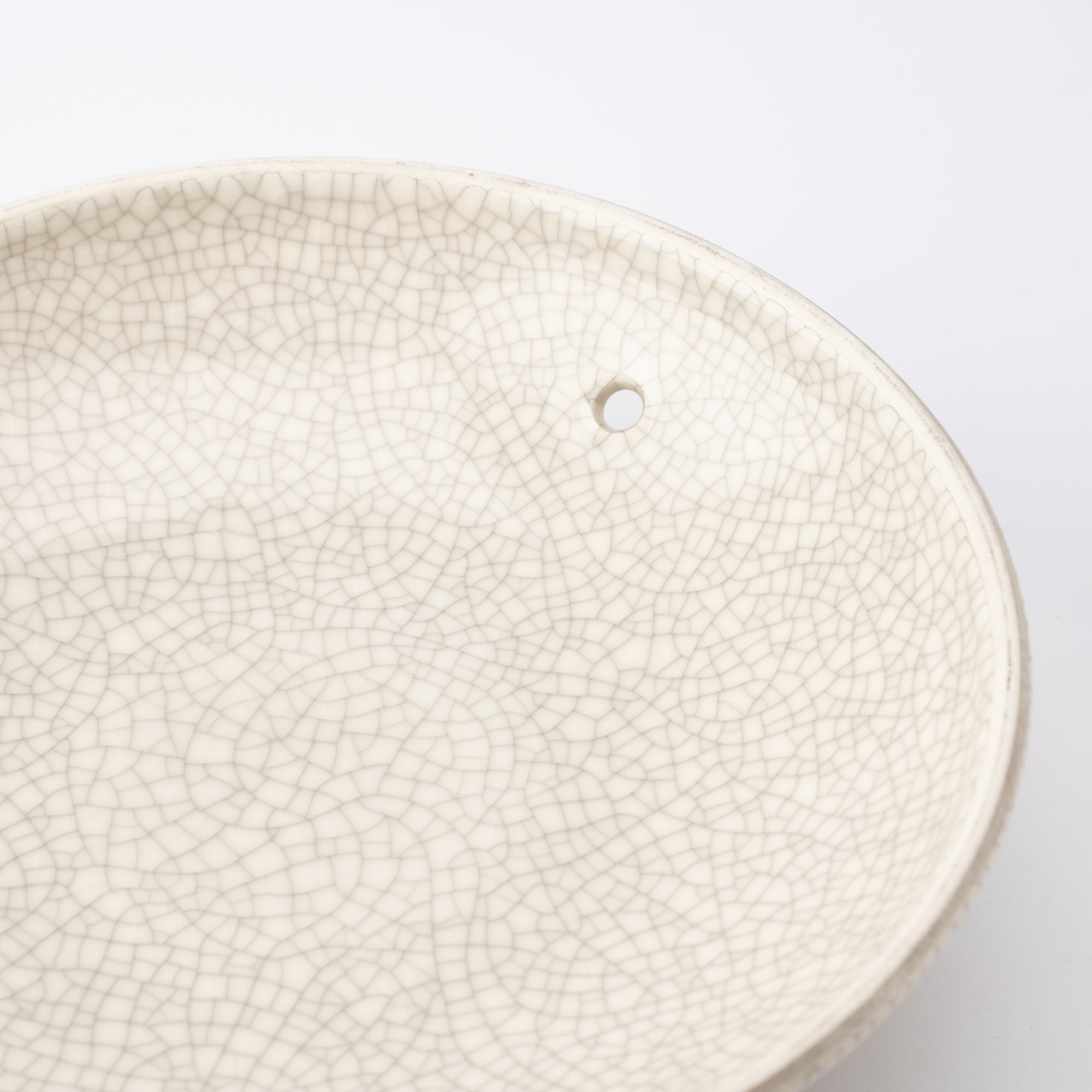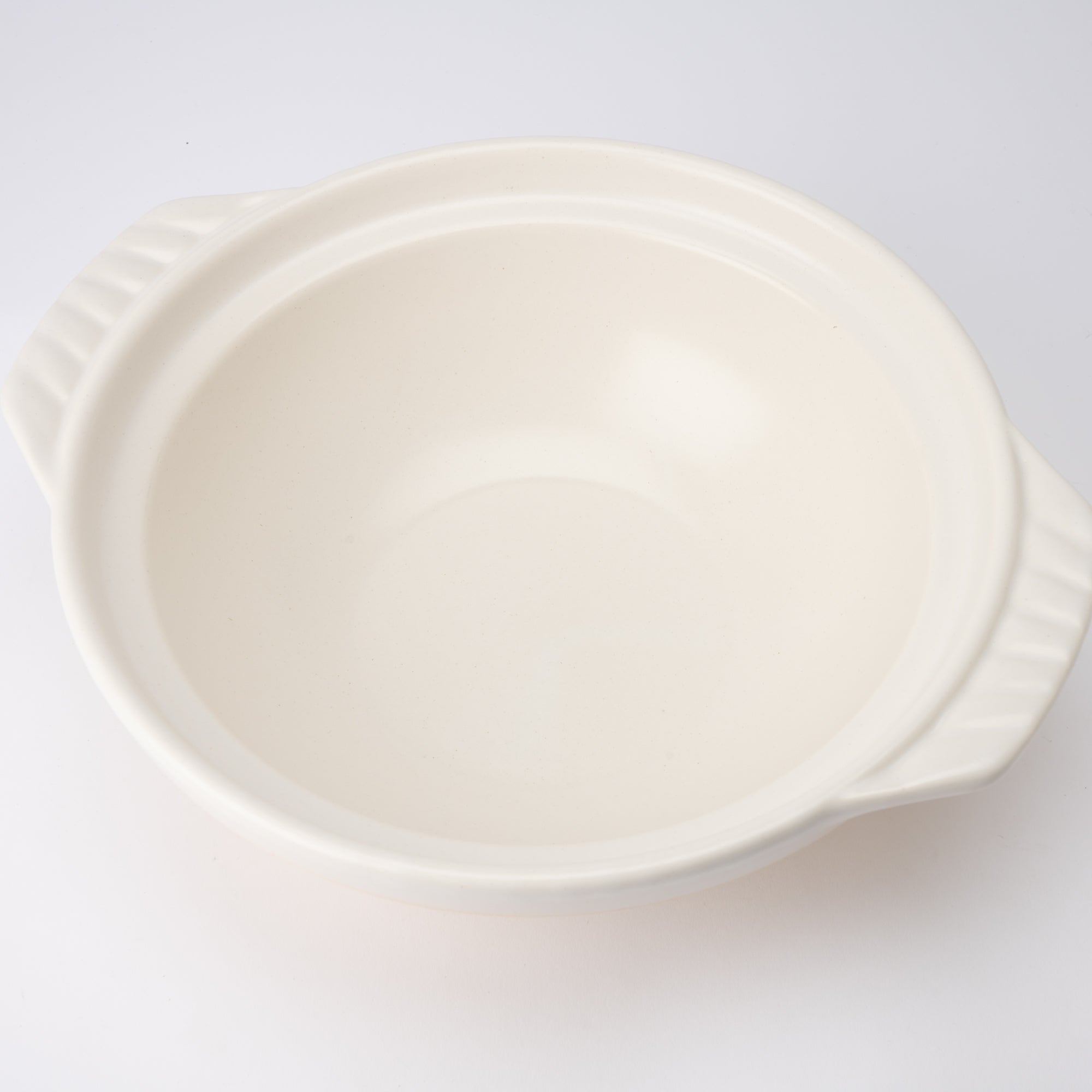













White Kannyu Donabe Japanese Clay Pot for 3 persons
Estimated Shipping Widget will be displayed here!
The Sumi Kannyu (ink crazing) series is the oldest of GINPO's earthenware pots; the design, introduced in 1955, was an innovation of the company's founder and is still loved by many people.
The kannyu decorative technique, which previously was only used for small ceramic items such as matcha bowls, is used to intentionally create fine cracks in the surface glaze. In addition, sumi ink is used to make the pattern stand out even more. The success of this difficult design in pots for the general household was one of the company's early achievements.
With a somewhat shallow shape, the 2.2 L (74.4 fl oz) size is suitable for 3 persons to enjoy donabe dishes. For other dishes such as soup, stew, curry, or cheese fondue, it can cook up to 4 portions.
DETAILS
| Quantity | 1 |
| Size | D 32.5 cm (12.8 in) x H 15 cm (5.9 in) / For 3 people |
| Capacity | 2,200 ml (74.4 fl oz) |
| Material | Stoneware (Non-induction cookware) |
| Microwave | Yes |
| Dishwasher | No |
Maker / Brand
Founded in 1932 by Ginpo Toki, Ginpo is a renowned producer of Banko ware, a celebrated form of Japanese ceramics from Yokkaichi, Mie Prefecture, carrying on its tradition through four generations.
Its representative series—Kikka, Hana Mishima, and Sumi-Kannyu—combine refined craftsmanship with modern techniques, embodying both elegance and practicality. The PETARI line, on the other hand, reinterprets Japan’s traditional donabe clay pot for contemporary living, bringing joy to everyday cookware.

Crafts
Yokkaichi Banko ware—commonly known as Banko ware—finds its origins in the crafting of ceramics ranging from everyday tableware to flower vases. Today, it is best known for its donabe, or Japanese clay pots, valued for their durability and excellent heat retention. Around 80 percent of all donabe produced in Japan are Banko ware, making them an essential tool for home-cooked meals.

How to Care
Choose options














Estimated Shipping Widget will be displayed here!
Donabe Clay Pots
Donabe, traditional Japanese clay pots, are often used in restaurants and homes to serve authentic hot pot dishes like chanko nabe, yudofu, and oden. These winter favorites are especially flavorful when prepared in a donabe.
Experienced chefs and science agree: cooking with a donabe makes food more delicious. Research shows that compared to a metal pot, cooking with a donabe clay pot can produce as much as 30% more glutamic acid, a key component of umami.

Stoneware
From our tableware and dinnerware collection, we have gathered stoneware products that fully display the warmth of the material. We hope that you will welcome these pieces, which are loved by people of all ages and regions, into your home.


